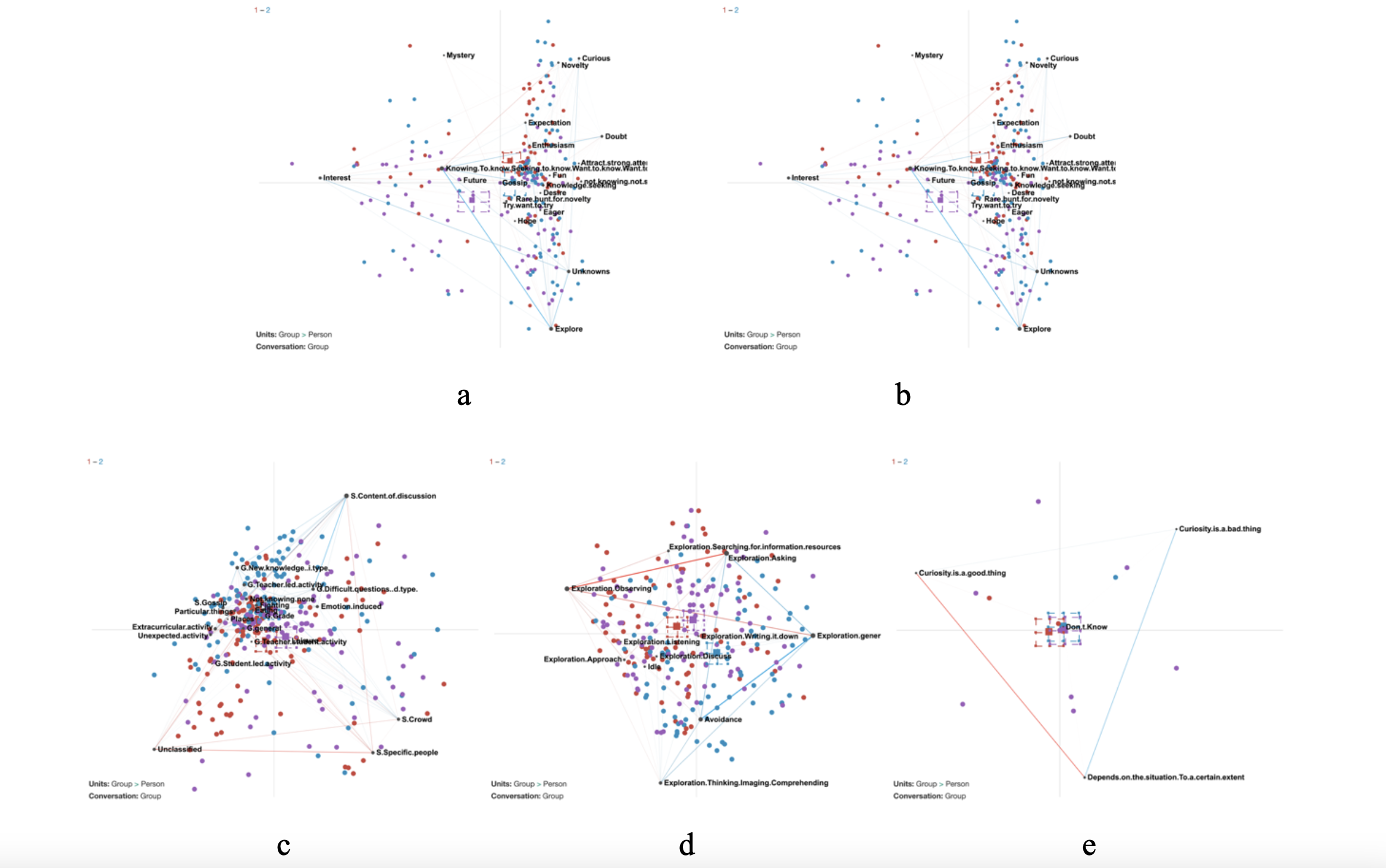Students' Curiosity and Academic Performance
The research for this project has been completed. I'm currently writing the paper titled “_Perceptions of Curiosity in School and Its Relationship with Academic Performance: A Quantitative Ethnography Study_” as the first author.
Perceptions of Curiosity in School and Their Relation with Academic Performance: A Quantitative Ethnography Study
This study investigates the subjective experiences and attitudes toward curiosity among Chinese middle school students and examines how these perceptions relate to their academic performance. The research involves 337 students aged 12 to 15, utilizing a mixed-methods approach that combines open-ended survey questions and academic achievement records. Through the application of quantitative ethnography (QE) with text analysis and epistemic network analysis (ENA), the study captures a nuanced picture of how students define and express curiosity within a school environment. One of the key findings reveals that students with stronger curiosity about knowledge within the classroom tend to have higher academic performance. In contrast, curiosity about non-academic topics showed no significant correlation with academic achievement. These insights highlight the critical role that focused curiosity can play in learning, suggesting that fostering curiosity related to school subjects may be an effective way to enhance educational outcomes.

Interestingly, the study further shows that higher-achieving students tend to perceive curiosity as an exploratory process rather than a mere interest in acquiring information. They are more inclined to engage with curiosity by connecting it to broader experiences, displaying a willingness to explore beyond the immediate scope of classroom learning. This exploratory mindset contrasts with lower-performing students, who often associate curiosity with simpler knowledge-seeking behaviors. The findings suggest that encouraging an exploration-oriented approach to curiosity might be beneficial for cultivating deeper understanding and academic engagement. This aspect underscores the idea that curiosity isn’t just about asking questions or seeking answers; it’s about being open to discovering new possibilities and connections, which can significantly enrich the learning process.
Despite recognizing curiosity’s importance, students exhibit mixed attitudes toward it. About one-third view curiosity positively, another third consider it negative, and the remaining students feel that its impact depends on the situation. This variation indicates that while curiosity is a vital element of learning, its perception is influenced by individual experiences and contexts. The study’s insights have important implications for educators, suggesting that creating an environment that supports curiosity—both in academic and non-academic settings—could enhance students’ motivation and academic performance. By understanding how curiosity operates in different contexts and among different groups of students, schools can develop strategies to foster a more curiosity-driven learning culture that not only improves academic outcomes but also promotes lifelong learning and well-being.
The related conference abstract has been submitted to AERA 2025, and the journal paper titled “Perceptions of Curiosity in School and Their Relation with Academic Performance: A Quantitative Ethnography Study” has been completed and is reviewing by co-authors.
This research, I performed data analysis and contributed as a co-first author for a conference abstract, and drafted the journal paper as the first author. The research is under the advice of Prof. Xin TANG from the ME-WELL Lab, School of Education, Shanghai Jiao Tong University.